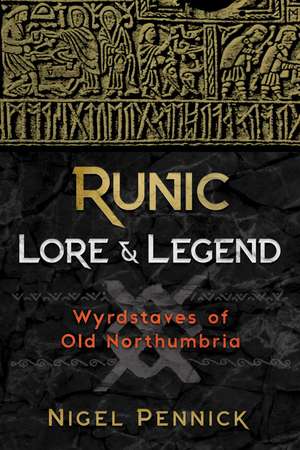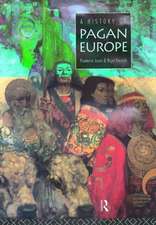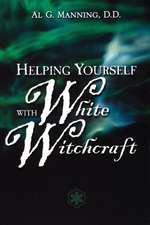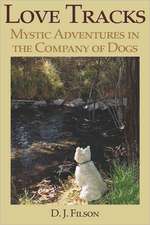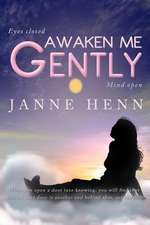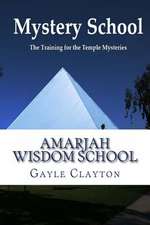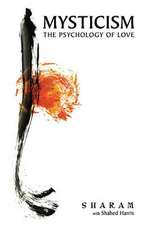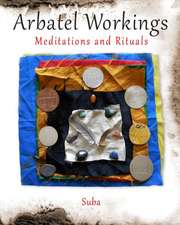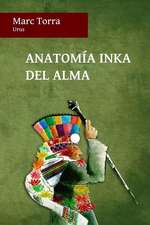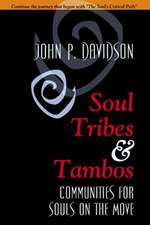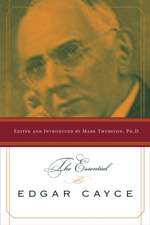Runic Lore and Legend: Wyrdstaves of Old Northumbria
Autor Nigel Pennicken Limba Engleză Paperback – 21 feb 2019
A practical guide to the Anglo-Saxon Futhark and how runes were used in Old England
In the early Anglo-Saxon period, the region of Great Britain known as Northumbria was a kingdom in its own right. These lands, in what is now northern England and southeast Scotland, were the targets of the first Viking raids on Britain. This violent influx, followed by the establishment of trade routes with the Norse, brought the runes to the region, where they intermingled with local magical traditions and legends, resulting in the development of a practical runic wisdom entirely unique to Northumbria.
In this guide to the Wyrdstaves, or runic practices, of Old Northumbria, Nigel Pennick examines the thirty-three runes of the Anglo-Saxon Futhark and how they were used in Old England for weaving the web of Wyrd. Sharing runic lore and legends from the area, he explains how the Northumbrian runes are unique because they contain elements from all the cultures of the region, including the Picts, Britons, Romans, Angles, Scots, and Norse. He illustrates how each rune in this tradition is a storehouse of ancient knowledge, detailing the meanings, historical uses, symbolism, and related tree and plant spirits for each of the thirty-three runes. The author describes the Northumbrian use of runes in magic and encryption and explores geomancy divination practices, the role of sacred numbers, and the power of the eight airts, or directions. He also shows how the Northumbrian runes have a close relationship with Ogam, the tree alphabet of the ancient Celts.
Providing a magical history of Northumbria, as well as a look at the otherworldly beings who call these lands home, including boggarts, brownies, and dragons, Pennick explains how traditional spirituality is intimately tied to the landscape and the cycle of the seasons. He reveals how the runic tradition is still vibrantly alive in this area and ready for us to reawaken to it.
In the early Anglo-Saxon period, the region of Great Britain known as Northumbria was a kingdom in its own right. These lands, in what is now northern England and southeast Scotland, were the targets of the first Viking raids on Britain. This violent influx, followed by the establishment of trade routes with the Norse, brought the runes to the region, where they intermingled with local magical traditions and legends, resulting in the development of a practical runic wisdom entirely unique to Northumbria.
In this guide to the Wyrdstaves, or runic practices, of Old Northumbria, Nigel Pennick examines the thirty-three runes of the Anglo-Saxon Futhark and how they were used in Old England for weaving the web of Wyrd. Sharing runic lore and legends from the area, he explains how the Northumbrian runes are unique because they contain elements from all the cultures of the region, including the Picts, Britons, Romans, Angles, Scots, and Norse. He illustrates how each rune in this tradition is a storehouse of ancient knowledge, detailing the meanings, historical uses, symbolism, and related tree and plant spirits for each of the thirty-three runes. The author describes the Northumbrian use of runes in magic and encryption and explores geomancy divination practices, the role of sacred numbers, and the power of the eight airts, or directions. He also shows how the Northumbrian runes have a close relationship with Ogam, the tree alphabet of the ancient Celts.
Providing a magical history of Northumbria, as well as a look at the otherworldly beings who call these lands home, including boggarts, brownies, and dragons, Pennick explains how traditional spirituality is intimately tied to the landscape and the cycle of the seasons. He reveals how the runic tradition is still vibrantly alive in this area and ready for us to reawaken to it.
Preț: 66.41 lei
Preț vechi: 88.58 lei
-25% Nou
Puncte Express: 100
Preț estimativ în valută:
12.71€ • 13.27$ • 10.52£
12.71€ • 13.27$ • 10.52£
Carte disponibilă
Livrare economică 21 martie-02 aprilie
Livrare express 01-07 martie pentru 44.30 lei
Preluare comenzi: 021 569.72.76
Specificații
ISBN-13: 9781620557563
ISBN-10: 1620557568
Pagini: 176
Ilustrații: 65 b&w illustrations
Dimensiuni: 152 x 229 x 13 mm
Greutate: 0.3 kg
Ediția:2nd Edition, Revised Edition of Wyrdstaves of the North
Editura: Inner Traditions/Bear & Company
Colecția Destiny Books
ISBN-10: 1620557568
Pagini: 176
Ilustrații: 65 b&w illustrations
Dimensiuni: 152 x 229 x 13 mm
Greutate: 0.3 kg
Ediția:2nd Edition, Revised Edition of Wyrdstaves of the North
Editura: Inner Traditions/Bear & Company
Colecția Destiny Books
Notă biografică
Nigel Pennick is an authority on ancient belief systems, traditions, runes, and geomancy and has traveled and lectured extensively in Europe and the United States. He is the author and illustrator of more than 50 books, including The Pagan Book of Days and Pagan Magic of the Northern Tradition. The founder of the Institute of Geomantic Research and the Library of the European Tradition, he lives near Cambridge, England.
Extras
Chapter 4
Runes and Consciousness: Weaving the Web of Wyrd
The Northern Tradition worldview of the people who founded Northumbria sees human existence as part of a worldwide fabric of people, things, and events traditionally called the Web of Wyrd. The Old English word wyrd is derived from the verb weorðan, which means “to become” or “to come to pass.” It is cognate with the Latin verb vertere, “to turn.” We talk about how events have turned out; and Wyrd means an individual’s fate, position in the world, or destiny. But this Northern Tradition concept does not mean life is predestined. Here the warp of the woven fabric of the Web of Wyrd is seen as time and events, while the weft is composed of individual human acts. As the process of weaving the web continues, the pattern of interactions of the threads, which are lives and events, irreversibly come together. Even the gods are subject to Wyrd, in both the Northern Tradition and English Christianity. As an Old English gnomic verse in one of the Cottonian manuscripts tells us: “The glories of Christ are great: Wyrd is strongest of all.”
Icons of the goddess Frigg, Queen of Heaven, portray her with a distaff and spindle, or riding on a distaff in the manner of a witch on a broomstick. Northern Tradition astronomy calls the starry heavens Frigg’s Cloak. The spindle with which she spins is the North Star, Polaris, while her distaff is marked by the three stars called the Belt of Orion in Graeco-Arabic astronomy. This image of the divine spinner is reflected in Christian images of the annunciation, which depict Mary spinning with a spindle and, beside her, a woven wickerwork basket containing wool. Although connected with the story of Jesus, the weaving of destiny by the woman who enables new human life to come into the world does not originate in Judaeo-Christian tradition. It is present in Greek and Roman cosmology where three sisters representing the past, the present, and the future are shown participating in the three stages of weaving. The first spins the thread from the raw materials. The second weaves the various threads spun by the first into a fabric, and the third cuts or rips the fabric apart. In England, these are the Weird Sisters, and the fabric woven by the middle one is the Web of Wyrd.
Telling of the Weird Sisters, whom the Norse call the Nornir, the Icelandic poem Voluspá recounts that they “staves did cut, laws did they make, lives did they choose: for the children of men they marked their fates.” The Norns have a name that is interpreted as “those who speak,” being related to the Middle English verb nurnen, “to say.” Their utterances or decrees are expressed in the language of runic writing, the Old English words stafir and stafas, “staves.” Staves can mean both runic characters and the wooden staves upon which they are cut. The runes are integral with fate and record: the Old English word wyrdstafas refers to the decrees of fate, and endestafas is death. But whatever happens to us is the result of how we act within the conditions we find ourselves, for we have free will within our circumstances. We are within the given circumstances and must endure their difficulties, but how we endure them and how we deal with our circumstances is up to us. Fate works in accordance with nature; all things that come to individuals are neither rewards nor punishments sent by the gods, but they are the inevitable consequences of actions.
The runes are fundamental to understanding something of the weavings of the Web of Wyrd. At the present day the common view concerning alphabets, other than taking writing and reading for granted, is that they are solely practical in character. They are considered as functional necessities that are required for written communication and the conduct of everyday life. The possibility that there may exist within them some deeper significance rarely emerges into commonplace awareness. But if we begin to penetrate beneath appearances, we enter the realm of many concepts and connections, which demonstrate the basic unity of life that is the Web of Wyrd. For in the use of characters to represent sounds and numbers we penetrate the mysteries that lie at the foundations of existence.
Alphabets are derived from pictograms and glyphs that stand for actual things or actions as well as phonetic sounds. The modern Western alphabets of Hebrew, Greek, Latin, Cyrillic, and Arabic owe their source to an ancient Canaanite script that developed into two major versions: Phoenician and Aramaic. Alphabets to the east of Syria were derived from the Aramaic, while those to the west, from Phoenician. Hence the ancient alphabets of Europe--including Etruscan, Oscan, the various forms of Runic, Gothic, Church Slavonic, the Aibítir of Gaelic, and the Coelbren y Beirdd of Wales--are all derived ultimately from the Phoenician script of 3,000 years ago.
The runes have a special place in the European Tradition. The alphabetic glyphs we call runes are what appear in the mind when the word rune is heard. But a rune is not just a letter of an alphabet; it can be a song, an incantation, or an invocation as well as a glyph pregnant with symbolic meaning either as an alphabetic letter, an idogram, or a symbol, in some cases all at the same time. So a rune is more than just a letter in an ancient alphabet. Its actual meaning, raunen, in Old English run and in Middle Welsh rhin, was “mystery.” This meaning tells us that within the simple figure, composed of a few lines, lies a great deal more than its surface appearance.
Runes and Consciousness: Weaving the Web of Wyrd
The Northern Tradition worldview of the people who founded Northumbria sees human existence as part of a worldwide fabric of people, things, and events traditionally called the Web of Wyrd. The Old English word wyrd is derived from the verb weorðan, which means “to become” or “to come to pass.” It is cognate with the Latin verb vertere, “to turn.” We talk about how events have turned out; and Wyrd means an individual’s fate, position in the world, or destiny. But this Northern Tradition concept does not mean life is predestined. Here the warp of the woven fabric of the Web of Wyrd is seen as time and events, while the weft is composed of individual human acts. As the process of weaving the web continues, the pattern of interactions of the threads, which are lives and events, irreversibly come together. Even the gods are subject to Wyrd, in both the Northern Tradition and English Christianity. As an Old English gnomic verse in one of the Cottonian manuscripts tells us: “The glories of Christ are great: Wyrd is strongest of all.”
Icons of the goddess Frigg, Queen of Heaven, portray her with a distaff and spindle, or riding on a distaff in the manner of a witch on a broomstick. Northern Tradition astronomy calls the starry heavens Frigg’s Cloak. The spindle with which she spins is the North Star, Polaris, while her distaff is marked by the three stars called the Belt of Orion in Graeco-Arabic astronomy. This image of the divine spinner is reflected in Christian images of the annunciation, which depict Mary spinning with a spindle and, beside her, a woven wickerwork basket containing wool. Although connected with the story of Jesus, the weaving of destiny by the woman who enables new human life to come into the world does not originate in Judaeo-Christian tradition. It is present in Greek and Roman cosmology where three sisters representing the past, the present, and the future are shown participating in the three stages of weaving. The first spins the thread from the raw materials. The second weaves the various threads spun by the first into a fabric, and the third cuts or rips the fabric apart. In England, these are the Weird Sisters, and the fabric woven by the middle one is the Web of Wyrd.
Telling of the Weird Sisters, whom the Norse call the Nornir, the Icelandic poem Voluspá recounts that they “staves did cut, laws did they make, lives did they choose: for the children of men they marked their fates.” The Norns have a name that is interpreted as “those who speak,” being related to the Middle English verb nurnen, “to say.” Their utterances or decrees are expressed in the language of runic writing, the Old English words stafir and stafas, “staves.” Staves can mean both runic characters and the wooden staves upon which they are cut. The runes are integral with fate and record: the Old English word wyrdstafas refers to the decrees of fate, and endestafas is death. But whatever happens to us is the result of how we act within the conditions we find ourselves, for we have free will within our circumstances. We are within the given circumstances and must endure their difficulties, but how we endure them and how we deal with our circumstances is up to us. Fate works in accordance with nature; all things that come to individuals are neither rewards nor punishments sent by the gods, but they are the inevitable consequences of actions.
The runes are fundamental to understanding something of the weavings of the Web of Wyrd. At the present day the common view concerning alphabets, other than taking writing and reading for granted, is that they are solely practical in character. They are considered as functional necessities that are required for written communication and the conduct of everyday life. The possibility that there may exist within them some deeper significance rarely emerges into commonplace awareness. But if we begin to penetrate beneath appearances, we enter the realm of many concepts and connections, which demonstrate the basic unity of life that is the Web of Wyrd. For in the use of characters to represent sounds and numbers we penetrate the mysteries that lie at the foundations of existence.
Alphabets are derived from pictograms and glyphs that stand for actual things or actions as well as phonetic sounds. The modern Western alphabets of Hebrew, Greek, Latin, Cyrillic, and Arabic owe their source to an ancient Canaanite script that developed into two major versions: Phoenician and Aramaic. Alphabets to the east of Syria were derived from the Aramaic, while those to the west, from Phoenician. Hence the ancient alphabets of Europe--including Etruscan, Oscan, the various forms of Runic, Gothic, Church Slavonic, the Aibítir of Gaelic, and the Coelbren y Beirdd of Wales--are all derived ultimately from the Phoenician script of 3,000 years ago.
The runes have a special place in the European Tradition. The alphabetic glyphs we call runes are what appear in the mind when the word rune is heard. But a rune is not just a letter of an alphabet; it can be a song, an incantation, or an invocation as well as a glyph pregnant with symbolic meaning either as an alphabetic letter, an idogram, or a symbol, in some cases all at the same time. So a rune is more than just a letter in an ancient alphabet. Its actual meaning, raunen, in Old English run and in Middle Welsh rhin, was “mystery.” This meaning tells us that within the simple figure, composed of a few lines, lies a great deal more than its surface appearance.
Cuprins
INTRODUCTION
Our Picture of Past Times
CHAPTER 1
The Kingdom of Northumbria
A Brief History
CHAPTER 2
The Spirit Landscape of Northumbria
CHAPTER 3
Northumbrian Geomancy
The Year, Time, and Space
CHAPTER 4
Runes and Consciousness
Weaving the Web of Wyrd
CHAPTER 5
The Runes of Northumbria
CHAPTER 6
The First Airt of the Northumbrian Runes
CHAPTER 7
The Second Airt of the Northumbrian Runes
CHAPTER 8
The Third Airt of the Northumbrian Runes
CHAPTER 9
The Fourth Airt of the Northumbrian Runes
CHAPTER 10
Runes in Magic and Encryption
CHAPTER 11
Magical Symbols and Artifacts of Old Northumbria
CHAPTER 12
Ing
Legendary and Magical History
CHAPTER 13
Yr
The Outlaw Archers
CHAPTER 14
Otherworldly Beings of the Northumbrian Landscape
Boggarts, Hobs, Brownies, and Bogeymen
POSTSCRIPT
Ancestral Treasures
Glossary
Bibliography
Index
Our Picture of Past Times
CHAPTER 1
The Kingdom of Northumbria
A Brief History
CHAPTER 2
The Spirit Landscape of Northumbria
CHAPTER 3
Northumbrian Geomancy
The Year, Time, and Space
CHAPTER 4
Runes and Consciousness
Weaving the Web of Wyrd
CHAPTER 5
The Runes of Northumbria
CHAPTER 6
The First Airt of the Northumbrian Runes
CHAPTER 7
The Second Airt of the Northumbrian Runes
CHAPTER 8
The Third Airt of the Northumbrian Runes
CHAPTER 9
The Fourth Airt of the Northumbrian Runes
CHAPTER 10
Runes in Magic and Encryption
CHAPTER 11
Magical Symbols and Artifacts of Old Northumbria
CHAPTER 12
Ing
Legendary and Magical History
CHAPTER 13
Yr
The Outlaw Archers
CHAPTER 14
Otherworldly Beings of the Northumbrian Landscape
Boggarts, Hobs, Brownies, and Bogeymen
POSTSCRIPT
Ancestral Treasures
Glossary
Bibliography
Index
Recenzii
“In Runic Lore and Legend: Wyrdstaves of Old Northumbria, Pennick delivers the most thorough account of Anglo-Saxon history, mythology, and cosmology. His ability to weave their narrative into the use of the Northumbrian Runes and reveal their modern relevance is nothing less than magickal.”
“Nigel Pennick is one of the greatest living runic experts, bringing meticulous research and a profound magical understanding to his subject. This important book examines the distinctive Anglo-Saxon Futhark of Northumbria, essentially setting the thirty-three runes in the context of both time and place.”
“The magical runes of England have, ironically, been the most neglected of all the runic alphabets in writings in the English language. To have one of the leading authors on the wisdom of the runes pen this comprehensive manual on the Northumbrian wyrdstaves is a most valuable gift to all who follow the Northern Tradition. Pennick’s weaving of local history and lore around the runes illuminates his subject in a way that no other book has been able to achieve.”
“Nigel Pennick is a true initiate who can demonstrate to the reader how nature and cosmos correlate to each other. He explains runes, medieval traditions, and Celtic magic in a pedagogic way that helps us understand how these topics are universal--something that gives us knowledge about ourselves and is of highest relevance for humankind today. I regularly return to Nigel Pennick’s books and am delighted to add Runic Lore and Legend: Wyrdstaves of Old Northumbria to my shelf.”
"This book is far more than the cover promised--had I seen this in a bookshop I could have easily passed it over for something that appeared less intimidating but to have done so would have denied me the delightful, personable yet incredibly intelligent and thorough writing of this author... "
“Nigel Pennick is one of the greatest living runic experts, bringing meticulous research and a profound magical understanding to his subject. This important book examines the distinctive Anglo-Saxon Futhark of Northumbria, essentially setting the thirty-three runes in the context of both time and place.”
“The magical runes of England have, ironically, been the most neglected of all the runic alphabets in writings in the English language. To have one of the leading authors on the wisdom of the runes pen this comprehensive manual on the Northumbrian wyrdstaves is a most valuable gift to all who follow the Northern Tradition. Pennick’s weaving of local history and lore around the runes illuminates his subject in a way that no other book has been able to achieve.”
“Nigel Pennick is a true initiate who can demonstrate to the reader how nature and cosmos correlate to each other. He explains runes, medieval traditions, and Celtic magic in a pedagogic way that helps us understand how these topics are universal--something that gives us knowledge about ourselves and is of highest relevance for humankind today. I regularly return to Nigel Pennick’s books and am delighted to add Runic Lore and Legend: Wyrdstaves of Old Northumbria to my shelf.”
"This book is far more than the cover promised--had I seen this in a bookshop I could have easily passed it over for something that appeared less intimidating but to have done so would have denied me the delightful, personable yet incredibly intelligent and thorough writing of this author... "
Descriere
A practical guide to the Anglo-Saxon Futhark and how runes were used in Old England
